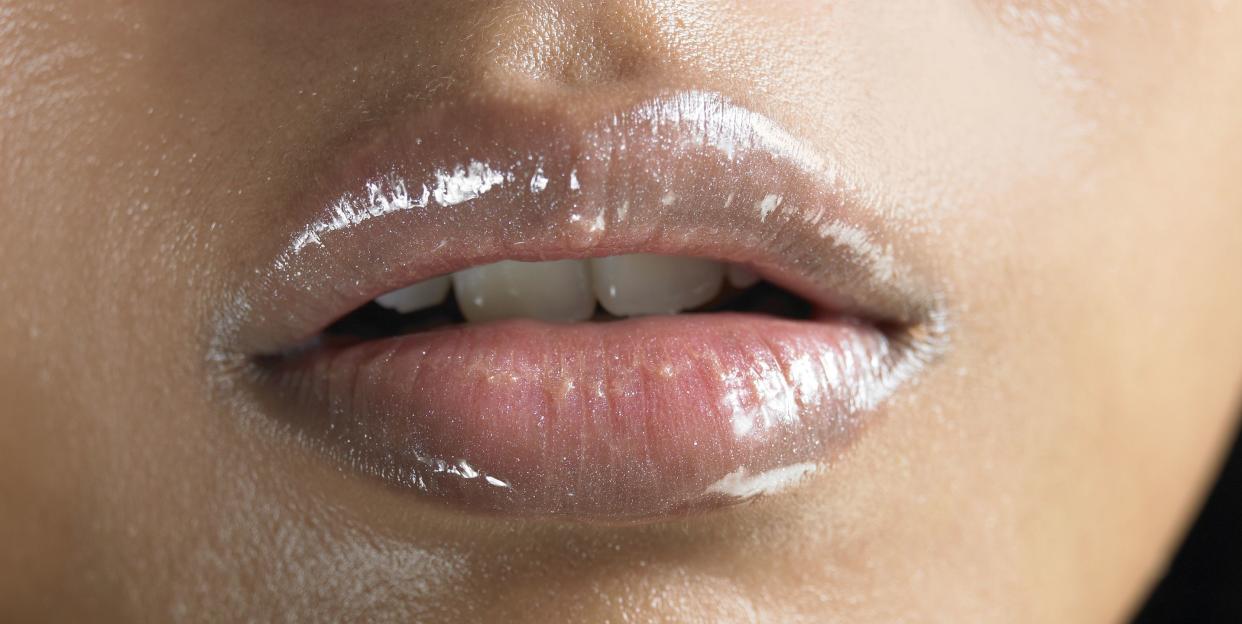When More Lip Balm Isn't the Answer for Chapped Lips

The modern skin care devotee understands skin better than ever. They cycle effortlessly between serums, moisturizers, and oils, and will tell you the difference between all three if you ever ask. They know when to exfoliate and when to moisturize—or hydrate, because yes, there is a difference. But one teensy area on everyone’s face can throw a wrench into the most flawless routine. We’re talking about lips, that finicky inch of skin that can get dry, flaky, and chapped from just one coat of liquid lipstick.
And as anyone with five lip balms rolling around their purse can tell you, picking up a treatment from the local drugstore isn’t always the quick fix you think it’ll be. “Chronic dry lips can be the result of a dry climate, the accumulation of dry skin on the lips, or not drinking enough water and staying hydrated,” says Charlene Valledor, a cosmetic chemist and president of the brand incubator SOS Beauty. “It can also result from an allergic reaction to ingredients in the lip balms you’re using. Many people are actually allergic to some of the seemingly ‘good’ ingredients in many balms, such as lanolin, beeswax, and coconut oil.
What causes dry lips?
Yup, that Instagram-famous lip treatment that works for everyone else but you? There’s probably a reason for that, and it’s not just user error. In fact, chapped lips can be caused by everything from the weather, to skin care formulas, to your own diet: Valledor notes that dry lips can even be a result of a vitamin B deficiency.
“Additional factors can also lead to chapped lips, such as allergies to ingredients or foods, certain medications you are on, some medical disorders such as thyroid or autoimmune disease, flavors or fragrances in lip balms, and even just constantly licking your lips can contribute to dry and chapped lips,” adds David Petrillo, a beauty chemist and Perfect Image CEO and founder.
What ingredients help chapped lips?
Yikes. So, what actually helps the average pair of lips? Petrillo recommends ingredients such as castor oil, ceramides, shea butter, or avocado oil. If you prefer the synthetic route, try out a silicone-based balm versus petroleum, since Petrillo notes that the former is an occlusive that still allows “some moisture” to be absorbed. Though petroleum has its perks, barring you aren't sensitive to it: “My favorite is Aquaphor, which forms a protective barrier but still lets oxygen pass through so your lips can ‘breathe,’ which allows for faster healing,” adds Valledor.
Can you become addicted to lip balm?
And regarding that beauty rumor you’ve undoubtedly heard about lips getting “addicted” to balm—there’s some truth to it. While Petrillo points out that lips don’t have oil glands to begin with, he says that overdoing it with moisture-trapping balms can trigger your body to stop "trying to hydrate or moisturize itself naturally,” encouraging your skin to depend on the product instead of its own process. But if that natural process is on the fritz? “If you don’t see improvement after two weeks, go see your doctor to rule out the chance of infection or an autoimmune disease,” says Valledor. Your lips—and the rest of your body—will be happy that you did.
You Might Also Like
